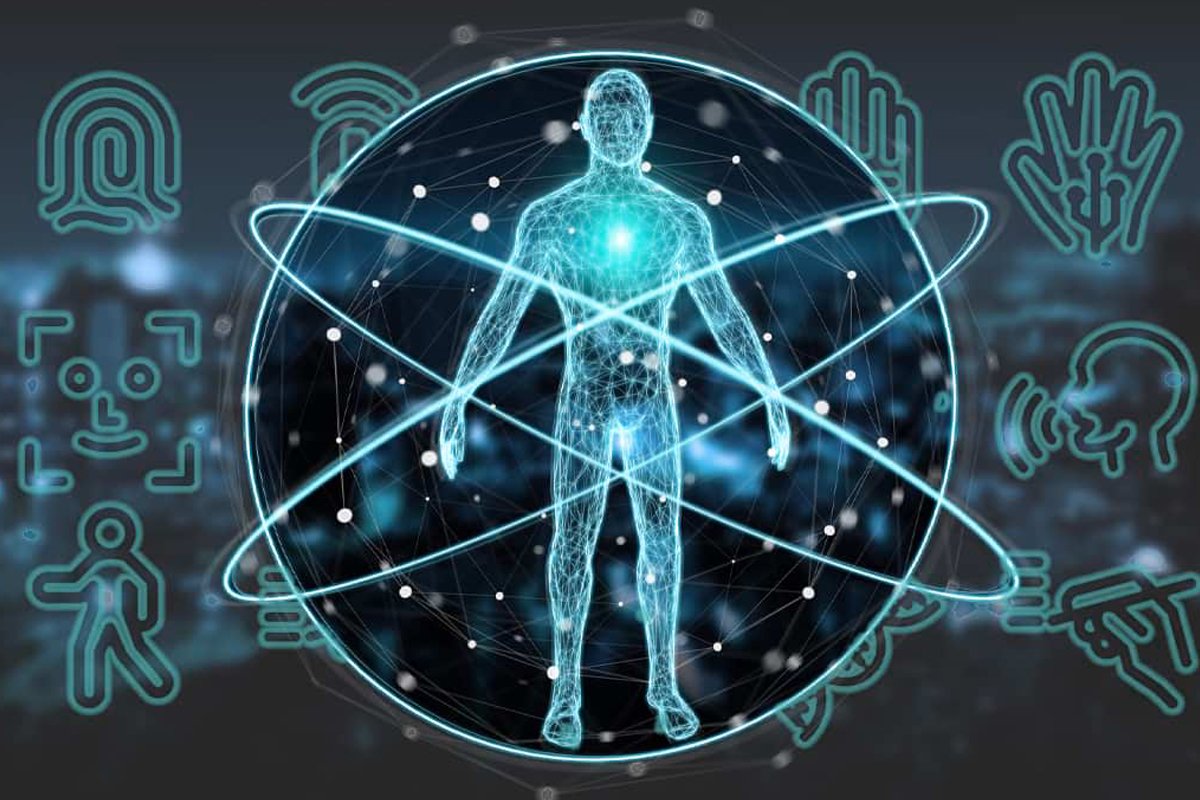Home Web & Software E-commerce SEO: How to Rank Your...
Read More- Home
- Technology
- Best Biometric Security technics
Role of Biometric Security & Digital Identity

Software Testing
In today’s rapidly digitising world, the Best Biometric Security technics are revolutionising how we authenticate and secure access. Biometric security refers to the kind of technology to identifies individuals through unique biological characteristics like fingerprints, facial recognition, iris scans, voice patterns, and even behavioural traits like typing rhythm or walking style. On the other hand, Digital identity encompasses the electronic information used to represent individuals in digital interactions, which includes credentials, identifiers, and different authentication methods. Unlike traditional passwords or PINs, biometric identifiers are nearly impossible to replicate and offer a more robust layer of protection.
Key aspects of biometric security and digital identity include reliability, real-time verification, privacy compliance, and seamless integration with existing systems. As cyber threats grow more and more, the integration of biometrics into digital identity frameworks is becoming a cornerstone of cybersecurity strategies worldwide. These technologies form a powerful synergy that enhances security, improves user convenience, and reduces the risk of fraud which projects the Best Biometric Security technics in 2025 Different sites are using different types of Biometric systems to detect fraudulent activities and to safeguard the data from any unwanted things.
Benefits of Biometric Security & Digital Identity

Enhanced Security
Biometric security represents a quantum leap in safeguarding sensitive data and systems compared to traditional authentication methods. Unlike the password method, which may steal, guess, or phish the biometric identifiers such as fingerprints, facial recognition, iris patterns, and voiceprints, which are inherently unique to each individual, making unauthorised access exponentially harder. The modern biometric systems incorporate liveness detection and AI-powered anti-spoofing to distinguish between real human traits and artificial replicas, thwarting sophisticated attacks like deepfake impersonation or silicone fingerprint moulds which showcase the best biometric security technics.
Convenient and Quick Access
Biometric authentication is revolutionising user experience by eliminating friction in daily interactions. Passwords, PINs, and physical keys are prone to being forgotten, lost, or stolen, creating bottlenecks in workflows which shows the influence of the best biometric security technics. In contrast, biometrics enable instant, intuitive access to unlock a smartphone with a glance, enter an office via facial recognition, or approve a payment with a fingerprint. Industries like healthcare, finance, and travel are leveraging biometrics to streamline operations.
Reduced Fraud and Identity Theft
Biometrics are a game-changer in combating identity fraud, which costs economies billions annually. Traditional authentication relies on shared secrets like passwords and SSNs that can be leaked or replicated, but the biometric traits are non-transferable and nearly impossible to forge at scale. Financial institutions are now using voice biometrics to detect imposters in call centres, while behavioural analytics like mouse movements and typing speed flag suspicious transactions in real-time with the best biometric security technics. By 2025, AI-driven anomaly detection will predict fraud patterns by cross-referencing biometric data with contextual cues. Governments are also rolling out biometric digital IDs linked to encrypted block chain ledgers, which prevent tampering and synthetic identity fraud.

Improved User Accountability
Biometrics introduce irrefutable accountability into digital and physical interactions by binding actions directly to individuals. Unlike passwords, which can be shared or hacked without a trace, biometric markers ensure non-repudiation, a legal term meaning a user cannot deny their participation in a transaction or access event. In workplaces, biometric time clocks prevent “buddy punching”, which saves companies up to 5% of payroll costs. Courts now accept biometric e-signatures as legally binding, with blockchain timestamps to certify authenticity shows the impact of the best biometric security technics.
Scalability and Integration
Biometric systems are highly adaptable, scaling from smartphones to national ID programs with minimal infrastructure overhaul. Cloud-based APIs like Microsoft Azure Face API and AWS Recognition allow developers to embed fingerprint or face recognition into apps within hours, while edge computing processes data locally for low-latency use cases like door access systems is developing with the best biometric security technics. By 2025, universal digital ID frameworks will let citizens use a single biometric credential across borders for banking, taxes, and healthcare. The rise of decentralised identity (DID) networks, where users control biometric data via blockchain wallets, will further simplify integration across platforms.
Tools for Biometric Security & Digital Identity

NEC NeoFace
NEC NeoFace leverages deep learning algorithms to deliver industry-leading facial recognition accuracy across diverse environments shows the best biometric security technics. The core strength lies in the real-time matching of faces against massive databases while compensating for variables like lighting, ageing, or masks which defines the best biometric security technics in today. The platform integrates anti-spoofing tech using 3D depth sensing and micro-expression analysis to reject photos or silicone masks.
Nowadays, enterprises use it for touchless access control, linking employee faces to HR systems for seamless building entry. Retailers deploy NeoFace kiosks for personalised ads based on demographic analysis. Future updates will add emotion detection for customer service analytics and quantum-resistant encryption to counter next-gen threats with the best biometric security technics.
Multi-Biometric Authentication Gateway of IDEMIA
IDEMIA’s platform unifies fingerprint, iris, facial, and voice recognition into a single, interoperable framework for governments and banks. Its flagship tech, MorphoWave, scans fingerprints in 0.5 seconds via hand gestures over a sensor, used in 50+ airports to process travellers without physical contact. For digital IDs, IDEMIA’s Augmented Border Control combines e-passport validation with facial recognition, reducing manual checks by 80%. Financial giants like BNP Paribas rely on their VoicePIN system, where customers speak a phrase for call-centre authentication, cutting fraud losses by 92% which happens due to the best biometric security technics.
Microsoft Entra Verifiable Credentials
Microsoft Entra pioneers decentralised biometric identity using blockchain and zero-knowledge proofs. Users store encrypted biometric data in personal digital wallets, issuing verifiable credentials to third parties without exposing raw data. Entra’s passwordless authentication syncs with Azure AD, letting employees access corporate networks via Windows Hello’s fingerprint/Face ID. Key innovations include post-quantum cryptography and cross-chain interoperability shows the best biometric security technics. Unlike centralised databases, Entra eliminates honeypot risks—hackers can’t steal biometrics scattered across user-controlled nodes.

Fujitsu PalmSecure
Fujitsu’s PalmSecure uses infrared sensors to map unique vein patterns beneath the skin—a highly secure method since veins are internal and impossible to replicate via photos. In 2025, its hybrid palm-vein/facial recognition will enable ultra-secure physical/digital access, where airports can plan contactless boarding via palm scans. Fujitsu’s PalmSecure Pro adds AI-driven health monitoring, detecting irregular blood flow during authentication as a cardiac risk indicator. Critically, the best biometric security technics are developing and it processes data locally, which addresses latency and privacy concerns. The tech is evolving toward touchless multi-factor authentication for smart factories, where gloves or grease render fingerprints unusable.
Apple Face ID + FIDO2 Integration
Apple’s Face ID sets the consumer biometric gold standard, using 30,000 IR dots to create 3D facial maps stored securely in the device’s Secure Enclave. In 2025, the integration with FIDO2 standards enables passwordless logins across websites and apps via biometrics alone without usernames is the impact of the best biometric security technics. Banks like Chase leverage this for one-tap mobile banking approval, while enterprises adopt it for zero-trust network access. Apple’s expansion into biometric wearables will extend Face ID beyond phones.
Future of Biometric Security & Digital Identity

As digital transformation accelerates globally, biometric security and digital identity will play an increasingly central role in shaping secure and personalised digital ecosystems. Different emerging technologies like blockchain, artificial intelligence, and machine learning are being integrated with biometrics to create even more resilient identity management systems. For instance, blockchain can decentralise identity storage, reducing single points of failure by enhancing privacy. In conclusion, the convergence of biometric security and digital identity is not just a technological shift but is necessary evolution in our digital lives. As adoption widens and technology matures, these systems will redefine trust, reshape digital interaction, and safeguard identities in a connected world.

Visakh A Vijayan
Content Writer
D Soft Technologies
How to Build a Career in IT Without a Technical Background?
Home Technology How to Build a Career in IT Without...
Read MoreRecent Articles
E-commerce SEO: How to Rank Your Online Store on Google 2026
Home Web & Software E-commerce SEO: How to Rank Your...
Read MoreHow to Build a Career in IT Without a Technical Background?
Home Technology How to Build a Career in IT Without...
Read More
